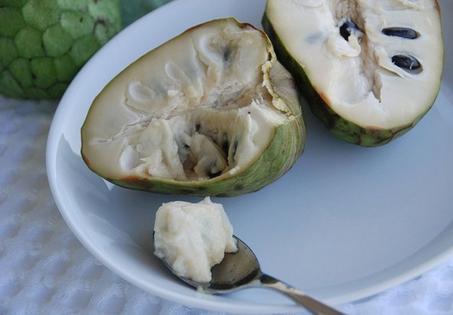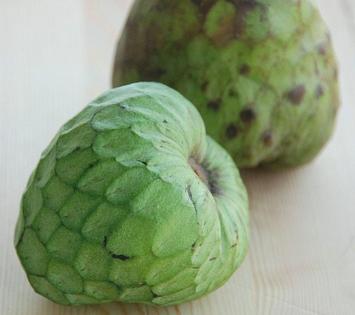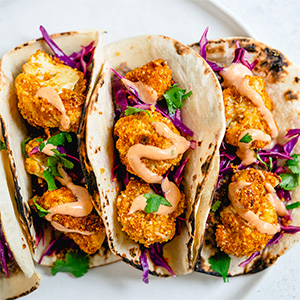ONE FOR THE TABLE: What is a cherimoya? Perhaps the greatest fruit on the planet
The cherimoya is the king of fruit. This is no surprise, given that this ancient Incan fruit was originally reserved for royalty.
From external appearances, the cherimoya (pronounced chair-uh-MOY-yuh) isn't exactly captivating. It looks more like something out of "The Flintstones" than an exquisite fruit. Don't let its prehistoric appearance put you off. Slice open a cherimoya and you will discover a fragrant, ivory, custard-like flesh. Hence its common name, "custard apple."
When selecting cherimoyas, look for green skin with a gold hue. Some fruits may be tinged with brown, which is OK; however, avoid fruits that are black or shriveled. Allow cherimoyas to ripen at room temperature. A ripe cherimoya, like a ripe avocado, should yield to gentle pressure, and will have a browner skin. (Note: In the photo showing two cherimoyas, the green one in the forefront needs a couple more days to ripen, while the browner one in the back is ready to eat.)
Once ripe, cherimoyas can be refrigerated for one to two days, but they will lose their flavor if kept longer. They are best eaten as soon as they reach full ripeness; their flavor is most intense when eaten at room temperature or just slightly chilled.
What does a cherimoya taste like? A perfectly ripe cherimoya is an intoxicating combination of tropical flavors like banana, coconut, strawberry, and mango. Some people also taste pineapple and papaya. Don't think one fruit could possibly have all of those ambrosial flavors? Then try one to see for yourself.
Slice the fruit in half and, using a spoon, scoop out the flesh. You can sprinkle it first with fresh lime juice. You can add the flesh to a smoothie. You can even make sherbet with it. But don't. It's best unadulterated, which lets you truly appreciate its unique flavor and texture. Just be sure you don't eat the shiny, large black seeds inside. Chomping on those will just send you to the dentist's office.
Once you taste a cherimoya's luscious, creamy flesh, you'll understand why Mark Twain called it "the most delicious fruit known to man."
Where can you buy cherimoyas? Most U.S. cherimoyas are grown in California and are available from early January through April. However, since they're sensitive to temperature changes, the season varies from year to year. Few major supermarkets will likely carry cherimoyas; try specialty and organic markets, or go online to reputatble sites such as Melissas.com. Though they're pricey, they're worth every penny.
(Susan Russo, a free lance food writer in San Diego, publishes stories, recipes, and photos on her cooking blog, Food Blogga http://foodblogga.blogspot.com/. One for the Table is Amy Ephron's online magazine that specializes in food, politics, and love. http://www.oneforthetable.com)














Comments